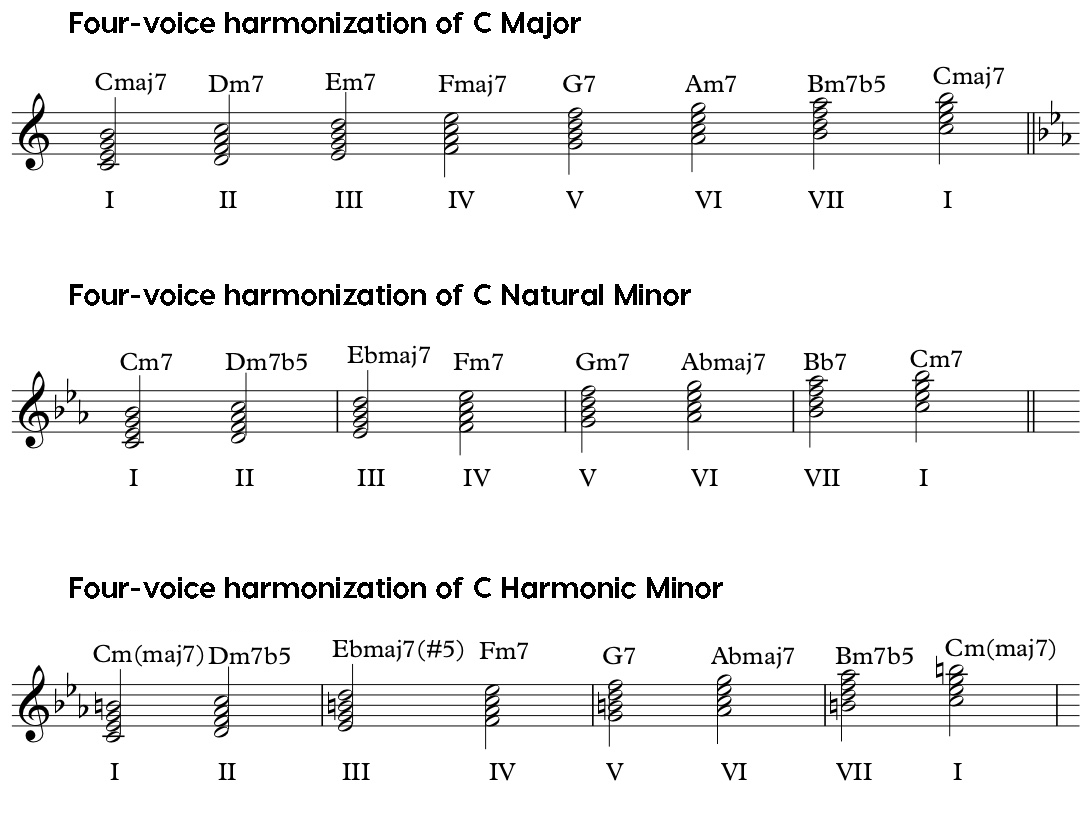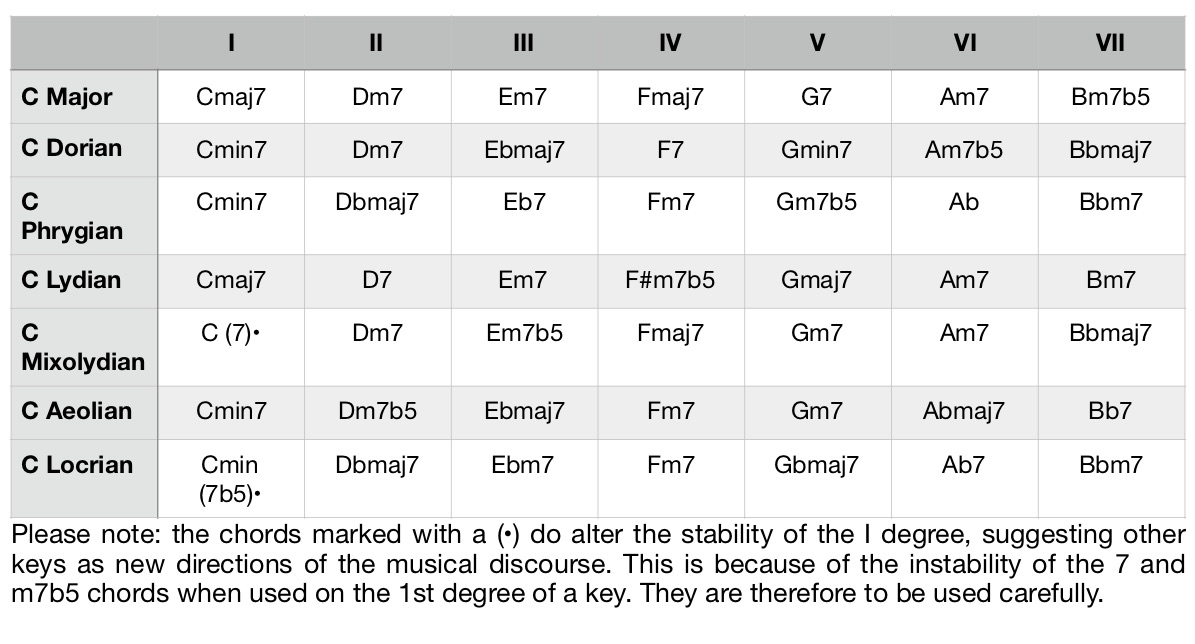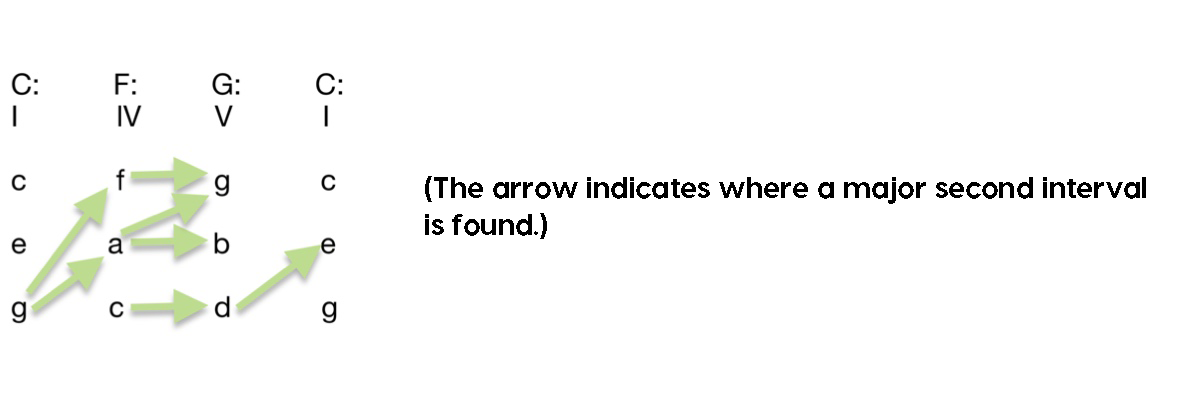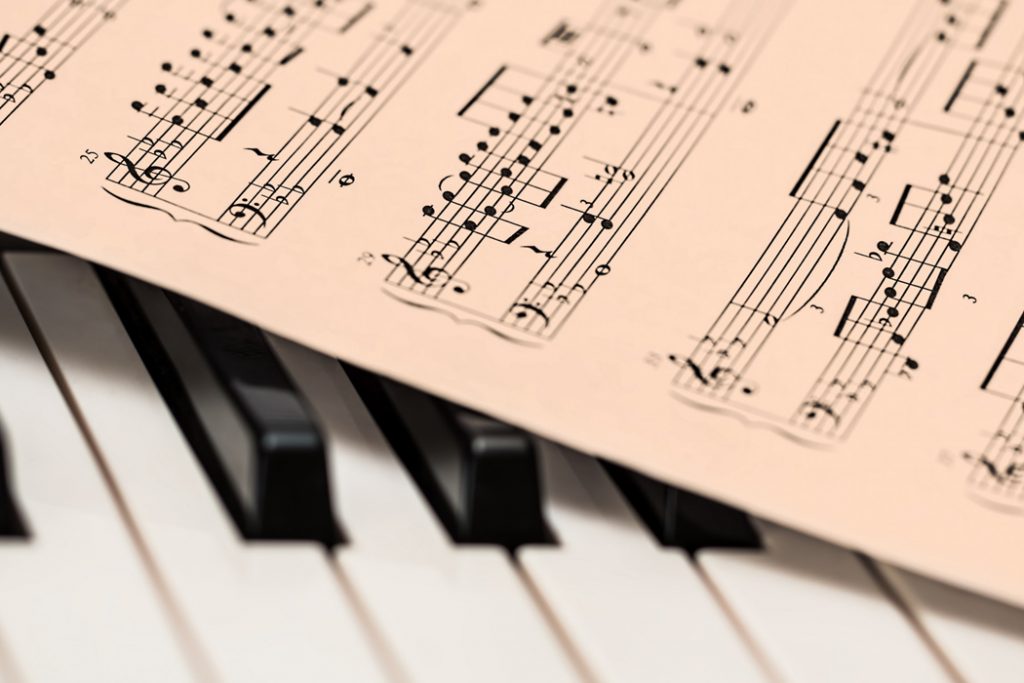
+ Bridge the worlds of theory, improvisation, and jazzy hip-hop, and improve your piano chops with Grammy-winner Kiefer in his course, Kiefer: Keys, Chords, & Beats.
Sometimes when we are writing a song or composing in a certain key, we may find that we get stuck pretty easily with the chords built solely from that scale. If we stick strictly to the notes in our scale, that can quickly lead to a dead end with regards to our choice of melodies and chords to harmonize with.
So, how can we spice up the same old chord progressions so that they still function harmonically, but also sound fresh and interesting?
To understand how to do this, we will take a look at the concept of borrowed chords. This is a concept we look at it in much more depth in our in-depth online course The Creative Power of Advanced Harmony, but here’s a primer. If you’re looking to improve your understanding of how chords, scales, and modes work in general, check out our in-depth online theory courses, including the advanced harmony one I just mentioned and its sister course Unlocking the Emotional Power of Chords.
Alright, here is the four-voice harmonization lineup of the C Major scale, making use of seventh chords. (Roman numerals are used to indicate the degrees of the scale.)

To expand this palette, we can decide to borrow a chord from a parallel key or mode. A parallel key is a scale that has the same tonic but a different construction of notes. For example, C major, C natural minor, and C harmonic minor are all parallel keys.
Here are their respective harmonizations.

Are there other scales from which we can borrow new chords to freshen up some basic progressions while still retaining their harmonic function?
Let’s start with parallel modes. The following chart contains chord symbols for four voiced harmonizations of some parallel modes, all built on the tonic C.

As we can see, these modes offer many more possibilities for our array of chords within a certain key.
Theory in Practice
If we harmonize the simple and common progression I – IV – V – I in C, we will make the following chords:
C – F – G – C
Now, if for some artistic reason we are in need for an alternative to these commonly used chords, we could resort to another IV, V, and I degree found in any of the parallel modes in the chart above, provided the effect makes sense and doesn’t involve a modulation to another key, which is quite different than the concept of borrowed chords.
These are some of the possible combinations:
I – IV – V – I
C Fm G C (IVm borrowed from parallel minor modes: C Phrygian, C Aeolian, or C Locrian)
C F Gm C (Vm borrowed from most parallel minor modes or C Mixolydian)
C F7 G C (IV7 borrowed from C Dorian)
If we play these progressions, we will hear that some of these chords sound more musically appropriate than others. But why is that?
Well, truthfully, it might not even matter why for some musicians. You can simply play all the modal combinations in your progression until something works musically or sounds interesting to you; and that would be absolutely fine.
But for those of you who are curious and interested to dive deeper, let’s talk about voice leading.
A Step Further: Voice Leading
Whenever we alter a note in a scale, this note will tend to resolve upwards if it has been made sharp or downwards if it has been made flat. This “principle of attraction,” along with the instability of the tritone, governs the fact that the V7, borrowed from the harmonic minor scale, resolves perfectly on the I of the C minor scale.
For example: G7 -> Cm ( or V7 -> Im)
The B♭ which was originally found in the key of C minor, has been made sharp by the use of B natural, and now resolves upwards to C:

If we spell out the notes in our I – IV – V – I progression from earlier, we get the following notes:

So, basically, wherever there is an interval of a major second between two notes in two subsequent chords, we can decide to alter the first note to find new pulling strength towards the second note.

Let’s consider the sequence IV – V within this progression, the richest in major second intervals. Provided we’ve established C major as our main key and that we are not modulating to a different key, we could flatten the note A in the F chord so that it pulls towards the note G in the G chord, resulting in the chords: Fm – G (first two bars):

(Please note: the doubling in the chords above follow the rules of classical voice leading, hence the curious voicings/doubled notes.)
Or, I could sharpen the root note F to pull towards G (third and fourth bar): F#dim – G, where the F# pull towards G, and the C towards B (being now transformed into a diminished fifth, a dissonant interval which calls for resolution by a downward step).
On the contrary, if we chose to use Gm as a borrowed fifth degree (last two chords in the example above), that wouldn’t be a very wise decision because the B♭ will have to either resolve to G (a minor third below) or C (a major second above), contradicting the auditory principle by which sharpened intervals tend to resolve a step upwards and flattened intervals down by step.
This is why certain borrowed chords sound more convincing than others. My advice is to experiment freely but also to consider these indications as a general rule of thumb to guide your choice on which chord to borrow from which parallel scale.
Don’t stop here!
Keep learning about theory and harmony, composing and arranging, songwriting, and more, with Soundfly’s in-depth online courses. Subscribe for access to all, including The Creative Power of Advanced Harmony, Orchestration for Strings, and our exciting new course with Grammy-winning pianist and producer, Kiefer: Keys, Chords, & Beats.





